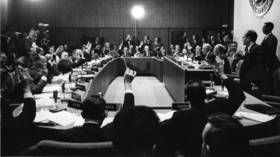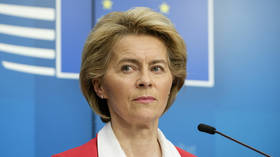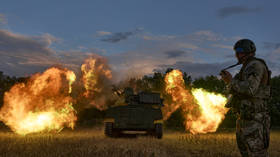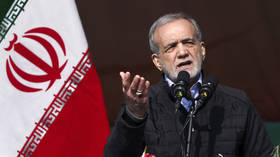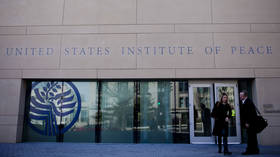Timofey Bordachev: Russia’s conflict with the West leads to questions over the value of military and political alliances
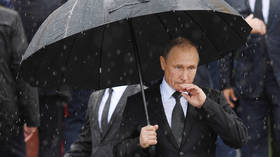
The continuing military and diplomatic clash between Russia and the West, led by the United States, raises questions to which, until recently, the answers seemed obvious. These include the phenomena of permanent alliances and allied relations.
It is no secret that the behaviour of Moscow’s formal allies in the CSTO (Collective Security Treaty Organization) and the Eurasian Economic Union (EAEU) in today’s environment raises questions for the Kremlin, while Russia’s opponents are raising hopes that the existence of these blocs is no longer an advantage, but a problem, for Russia’s foreign and defence policy.
We see examples of individual member countries of the CSTO or the EAEU meeting US demands in matters related to economic warfare against Russia. This makes one wonder how important and necessary are Russia’s allies when it cannot, like the US, exercise authoritarian control over its foreign and defence policies?
The phenomenon of permanent alliance relations is a relatively recent invention in international politics – it emerged after the Second World War and it is entirely unknown whether the next round of global upheavals of a similar scale will see it survive. Even if we are not all blown to bits by a general nuclear catastrophe in the coming years, what is happening makes the prospects for all the phenomena that have shaped the fabric of international life in recent decades, without exception, highly uncertain.
Today, the benchmark example of a permanent alliance of sovereign states is European integration. Another similar example is the NATO bloc, in which participation is cemented by the unconditional authority of a power far superior to its allies and not shy in making that clear.
It is no coincidence that the conflict around Ukraine, the first major war of the new era in international politics, is linked to the development of these two alliances. A strong group of states inevitably creates conflicts around itself. Indeed, this becomes a consequence of the fact that it protects the interests of its members.
From a theoretical point of view, the phenomenon of alliances is based on a simple formula: stability comes from mitigating inevitable injustices between states of different strengths, through consciously considering the interests of alliance partners as their own, or at least as close as possible to this.
This is also the basis of the idea of collective security, first formulated back in the [early 19th century] era of the Congress of Vienna by Klemens von Metternich. By the way, he was the representative of the weakest power among of the victors over Napoleon and, moreover, located in the centre of Europe, and therefore most interested in a stable order. In other words, even relatively permanent alliances are a product of weakness rather than strength and are not the best way for a state to survive if it is unable to defend its interests on its own.
Not surprisingly, the idea of permanent alliances did not take root until the middle of the twentieth century, because the world in which the great European empires ruled did not require them to have permanent relations, only ad hoc or interest-driven ones.
Everyone knows how chaotic the formation of the coalitions that engaged with each other in 1914 was. Their final composition had less to do with common views, or even the strategic interests of the participating countries, and more to do with an ad hoc calculation of the balance of forces and resources each side needed to win. And because the balance proved to be evenly matched, the war, instead of the impetuous campaigns of the 19th century or the elegant manoeuvres of the 18th century, became an endless mutual annihilation.
However, it was the century and a half that preceded the decline of Europe as the strongest part of the planet that shaped the meaning of even short-lived alliance relations – all European conflicts of the “balance of power” period were wars of coalitions.
The continuous formation of military alliances of powers was caused by the inability of each of them to defend its interests by relying on its own forces alone. This practice was still infinitely different from the blocs we know today, but it already reflected their main point – the combination of the power capabilities of the participants to achieve a specific goal.
It was usually a victory over a state which, for internal reasons, had acquired the scale or audacity to claim too large a share of the pie in the distribution of power in the European political arena. Several times alliances were formed against France, a couple of times against Prussia, once against Russia and never against Britain – the insular position of this state did not make it a continental threat.
However, back then, alliances could not be permanent, because for their participants there was never any question of actually being unable to survive without relying on allies.
In principle, we see the same thing now, when it comes to the biggest nuclear powers – the US, Russia or China. They do not need allies to survive. Their main interest is to use the territories of their partners as a base for deploying their forces in case of a conflict with an equally powerful enemy.
Another dimension is that the direct organizational forms of relations between the most powerful countries and others can be different. But this depends not on their need for allies as such, but on the scale of their own resources necessary for complete control of these satellites. The US still has enormous amounts of these, while Russia or China have far fewer, which leads to peculiarities in the behaviour of those with whom the two powers enter into permanent alliances.
We can see, then, how over the past hundred years the phenomenon of permanent alliances has taken a complete form, and it looks very archaic. In those cases where the leading power is not ready to perform the role of dictator due to subjective or objective reasons, the bloc becomes a factor of diplomatic interaction between them rather than an instrument for securing the collective interests of its participants. Even now, Armenia, Russia’s conditional ally in the South Caucasus, can use the presence of the CSTO as a way of exerting pressure on Russian diplomacy while absolving itself of all responsibility. In another case, however, we are witnessing a direct military clash between Russia’s formal allies – Kyrgyzstan and Tajikistan – with each demanding support from Moscow.
As a result, the whole idea of an alliance in the usual sense of the word has lost all meaning. First and foremost, for its leading participant. The small member states obviously have neither alternative options nor the military, political or demographic resources for fully independent survival.
This helps us to solve the problem of the formal preservation of such associations, even if they lose much of their necessary functions and content. However, it should be understood that, in the future, Russia, like its neighbors, will either have to give up the idea of institutionalizing its relations or resort to rather more authoritarian methods of governance.
